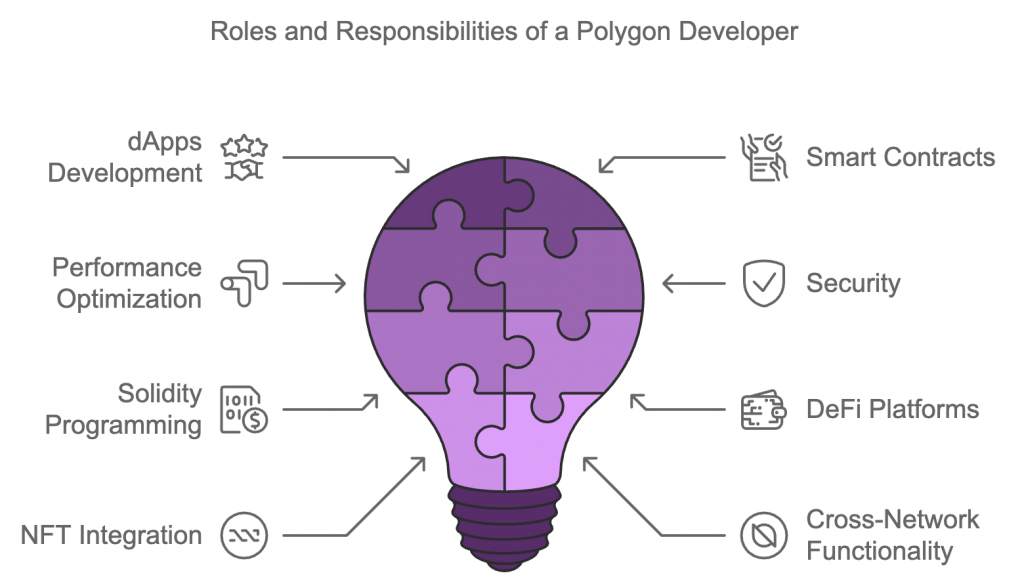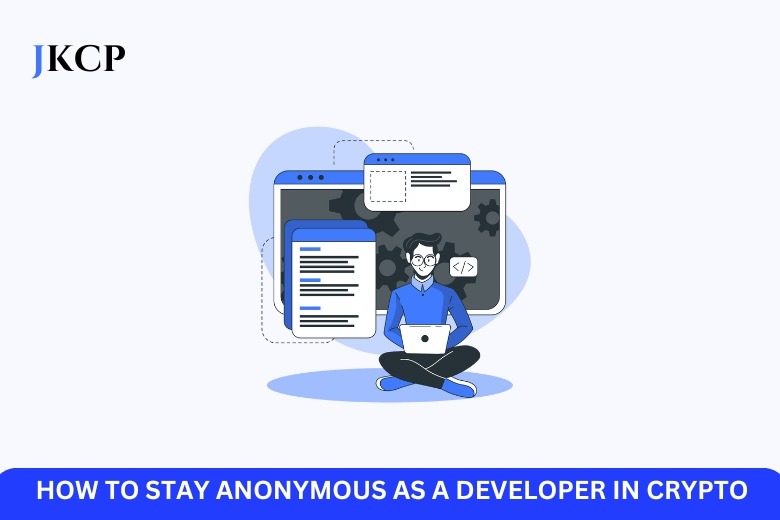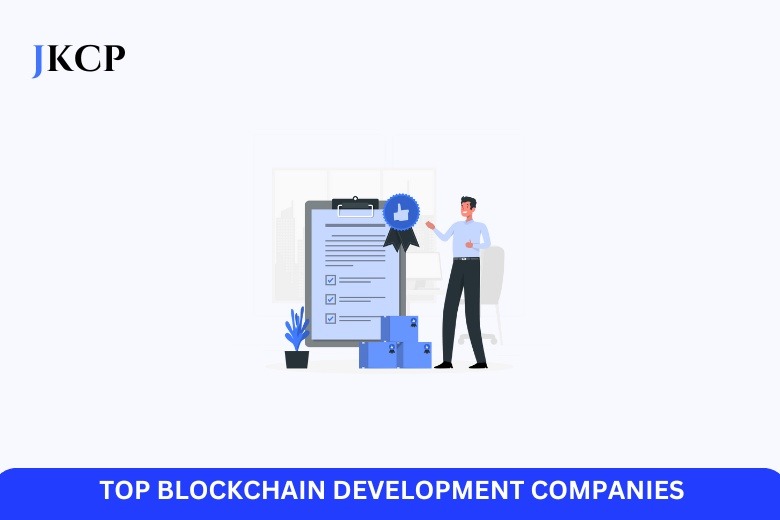How to Become a Polygon Developer?
Polygon, also known as Matic, is making waves in the crypto world as a Layer 2 solution that boosts Ethereum’s speed and reduces costs. Sounds cool, right? Well, it gets even better! With Polygon, developers can create decentralized applications (dApps) that don’t just save time but also cash by keeping fees super low. Whether you’re into decentralized finance (DeFi), gaming, or NFTs, Polygon is the go-to for building fast, scalable blockchain apps without compromising security.
Now, if you’re thinking, “This sounds amazing, but how do I get started as a Polygon developer?” In this article, we’ll uncover all about this job – from the tools you’ll need to master to the skills that’ll help you stand out in Polygon development.
What Do Polygon Developers Actually Do
So, do you want to be a Polygon developer? Awesome choice! But what does that mean? At the core, Polygon developers are the brains behind decentralized applications (dApps) and smart contracts that run on the Polygon network. These apps are the future of finance, gaming, and even art (hello, NFTs!).
But it’s not just about coding cool stuff. Polygon developers ensure that their dApps are fast, cheap to run, and secure—all while using Polygon’s tools to scale. They work with Solidity, the programming language of smart contracts, to ensure everything runs smoothly on the blockchain. Whether launching a new DeFi platform or integrating NFTs into a game, these developers are shaping the future of the decentralized web.
Simply put, Polygon developers do a lot: code, optimize performance, keep things secure, and ensure their apps can seamlessly talk to the Polygon and Ethereum networks.

Getting Started With the Right Tools
So, what do you need actually to start building on Polygon? The first step is getting comfortable with Solidity. It’s the language used to write smart contracts and is super important for making decentralized apps. If you know some programming basics like JavaScript or Python, you’re already ahead of the game! Solidity has much in common with those, so learning it won’t feel like starting from scratch.
Next up is the Ethereum Virtual Machine (EVM). Polygon is fully compatible with the EVM, which means if you know how to work with Ethereum, you can work with Polygon too. You’ll use tools like Remix, Truffle, and Hardhat to test, deploy, and manage your smart contracts. Don’t worry if these sound like foreign words right now — once you start building, you’ll get the hang of them quickly.
Mastering these tools is essential because they let you create scalable apps that can handle tons of transactions while keeping costs low. In the world of blockchain, that’s a giant win!

Understanding Polygon’s Architecture
It’s time to talk about the backbone of Polygon — its architecture. Don’t worry; this isn’t one of those super technical deep dives. We’re keeping it simple and to the point. So, what makes Polygon tick? It’s all about its three-layer structure, which allows it to be fast, secure, and scalable — the ultimate trifecta for blockchain developers.
- Ethereum Layer. Think of this as Polygon’s security guard. It’s connected to the Ethereum network and handles things like staking and security. So, while you’re enjoying those speedy transactions on Polygon, the Ethereum layer quietly ensures everything stays safe and sound.
- Heimdall Layer. Fancy name, right? The Heimdall layer is where the magic of Proof of Stake (PoS) happens. This layer ensures transactions are validated properly, keeping everything decentralized and trustworthy.
- Bor Layer. Finally, we have the Bor layer. This is where blocks are created, and transactions are processed. Thanks to Bor, Polygon can quickly handle a dozen transactions, a massive win for developers building apps that need to scale quickly.

All these layers work together to ensure your decentralized apps are lightning-fast but also secure and reliable. So, when coding on Polygon, you’re building on top of this robust architecture that does the heavy lifting. Pretty cool, right?
Becoming a Polygon Developer
So, you’ve got the basics down and are now ready to become a Polygon developer? Let’s break down the steps you need to follow to make that happen. Spoiler alert: it’s not as complicated as you might think!

Key Skills for Success
Now that you’re on your way to becoming a Polygon developer, let’s discuss the skills that will set you apart. It’s not just about writing code — it’s about writing great code, keeping security in mind, and building apps people can trust. Here are the essential skills you need to master.
- Security is Everything. Blockchain is all about security, but even the smallest mistake in your smart contracts can lead to big problems. Once a smart contract is deployed, it’s permanent — no take-backs! That’s why learning how to write secure code is so crucial. You’ll need to audit your smart contracts thoroughly, using tools like Hardhat or Truffle to test them for any vulnerabilities.
- Avoid Common Mistakes. One simple bug can lead to massive headaches or worse; a hacker could exploit it. To avoid this, focus on writing clear and well-structured code. Use verified libraries, limit the functionality of your smart contracts, and always test, test, test! The more you test, the less likely you’ll be to run into issues down the road.
- Stay Up-to-Date. Blockchain is a dynamic field, and things are constantly changing. New updates, security threats, and best practices are continually popping up. If you want to succeed as a Polygon developer, stay informed. Follow industry news, participate in developer communities, and never stop learning.
By focusing on security, avoiding rookie mistakes, and keeping yourself updated, you’ll build remarkable apps and gain the trust of your users—which is crucial in the world of decentralized applications.

Conclusion
Becoming a Polygon developer is not just about learning to code — it’s about diving into an exciting world where you can build the future of decentralized apps. Master Solidity, realize Polygon’s unique architecture, focus on security, and you’ll be well on your way to creating dApps that are fast, secure, scalable. Still, as the blockchain world constantly evolves, you need to grow alongside it as a developer. So keep experimenting, stay curious, and don’t hesitate to ask for help when needed.



